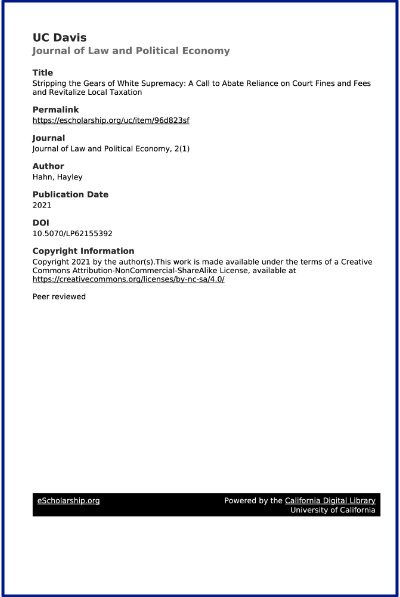By Maisie Karam, Jennifer Lukassen, Zoran Miladinovic, and Marnie Wallace
The efficiency and effectiveness of the Canadian criminal justice system has been a key focus of national discussion in recent years. Despite recent declines in the crime rate and a decreasing number of completed court cases nationally, charges in Canadian criminal courts have been taking longer to complete over the past decade (Miladinovic 2019b). This apparent disconnect has resulted not only in the Supreme Court of Canada’s R. v. Jordan decision (see Text Box 2) which imposed a presumptive ceiling for completing criminal court cases beyond which the delay is considered unreasonable, but has also sparked renewed interest in improving and measuring the efficiency of the current criminal justice system.
The Department of Justice Canada undertook a criminal justice system review starting in 2015 and spanning a three-year period, in which stakeholders, partners and Canadians were consulted on their ideas regarding how to strengthen and modernize the criminal justice system (Department of Justice Canada 2019a). Throughout this review, participants highlighted a number of key concerns, including lengthy delays for a case to get to trial, long case processing times, and a court system that is overly occupied with relatively minor administration of justice offences.
Around the same time, the Standing Senate Committee on Legal and Constitutional Affairs was mandated to review the roles of the Government of Canada and Parliament in addressing court delays. In addition to releasing 50 recommendations, the final report, Delaying Justice is Denying Justice: an Urgent Need to Address Lengthy Court Delays in Canada (2017), identified a number of factors contributing to lengthy delays including a lack of robust case management, a shortage of judges, prosecutors and courtrooms, as well as the increasing complexity of criminal trials.
Lengthy trials and other delays in court case processing have a significant impact on both accused persons and victims, as the stress of waiting for a resolution is made worse by each adjournment. Further, lengthy and delayed criminal proceedings have an impact on the quality and reliability of evidence (Senate Canada 2017). Ongoing and repeated delays in the court system can also diminish public confidence in the criminal justice system, which is fundamental to its operation.
Recent attempts have been made to address the inefficiencies that have been identified, including the introduction of former Bill C-75 (An Act to amend the Criminal Code, the Youth Criminal Justice Act and to make consequential amendments to other Acts),Note which is intended to modernize the criminal justice system and reduce delays (Department of Justice Canada 2019b).
Historically, data from the Integrated Criminal Court Survey (ICCS) has focused on completed cases, allowing for a retrospective look at the work that has been completed by the courts. The national conversation on court efficiency, however, now requires the ability to analyze the full scope of work going on in the court system, including ongoing or active cases. The full extent of the challenges faced by the Canadian criminal justice system, as well as any future progress, can only be known through the ongoing measurement of various aspects of court workload and case processing.
This report introduces a series of new criminal court workload and case processing indicators (see Text Box 1) based on open cases in order to add to the ongoing conversation about the efficiency of criminal courts in Canada. The development of these new indicators was made possible because of strong collaborative partnerships with key stakeholders. The Canadian Centre for Justice and Community Safety Statistics (CCJCSS) at Statistics Canada would like to acknowledge those who shared in the growing interest to expand the standard ICCS indicators in order to address existing data gaps, in particular, the Sub-Committee on Court Statistics (CSI) for the Steering Committee on Justice Efficiencies and Access to the Justice System and the Heads of Court Administration, Court Statistics and Information Sub-Committee (HoCA CSI).
The analysis in this Juristat is divided into seven sections. The first looks at the inventory of open cases and addresses such questions as: how many court cases start in a given year, and how many are open at a given time? What do open cases look like? The second section begins to analyze the age of open cases. The third section focuses on at-risk cases, specifically how many are potentially at risk of being stayed due to unreasonable delays. The fourth section examines completion rates. An analysis of case processing times makes up the fifth section of the report. The sixth section focuses on court workload and attempts to answer questions concerning how much overall work goes into closing cases. The final section addresses court backlog and analyzes the courts’ ability to meet the demands of incoming cases. Throughout the report, trends are presented for the last 10-years, as well as by offence, province and territory, and court level where relevant.
Ottawa: Statistics Canada, 2020. 31p.





















